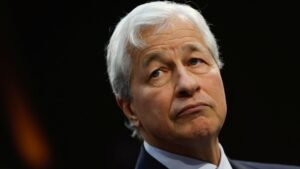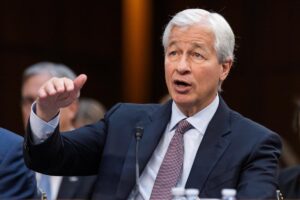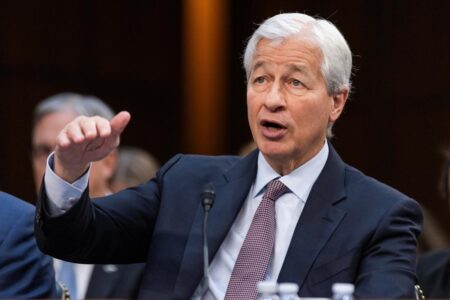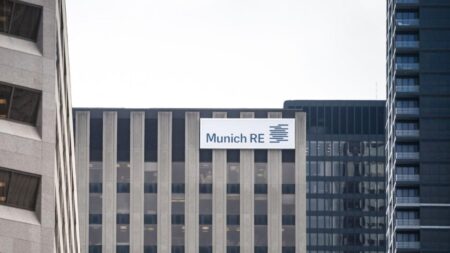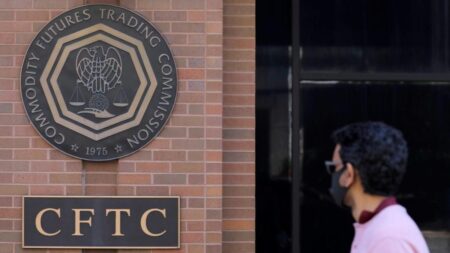(Bloomberg) — A multibillion-dollar plan to expand South Africa’s electricity transmission network may throw a lifeline to the country’s corporate bond market as it struggles to recover from a post-pandemic slump.
Most Read from Bloomberg
The National Transmission Company South Africa, a state-owned business that will operate separately from parent Eskom Holdings SOC Ltd., said this week it plans to spend 112 billion rand ($6.4 billion) on transmission capacity over the next five years.
The NTCSA — which started up on Monday — said it’s considering building infrastructure itself or paying for developers to construct transmission lines and then taking them over, as well as “independent transmission projects” that may involve issuing concessions to private companies. While it hasn’t decided on funding models, at least some of the money would have to come from capital markets, according to Rand Merchant Bank.
“Transmission infrastructure is capital-intensive and requires long-term funding,” Kate Rushton, a credit analyst at RMB, wrote in a report. “The debt market, including traditional providers such as banks, and the bond market will be important sources of debt financing.”
A flood of new issuance for transmission lines and other infrastructure spending by state-owned companies may help revive the corporate bond market, where new issuance remains below the record levels seen before Covid-19 plunged the economy into contraction.
Bond sales by companies reached 169 billion rand in 2019, before slumping in 2020. Issuance this year is at 116 billion rand, according to data compiled by Rand Merchant Bank, which expects borrowing to reach 131 billion rand by year-end. State-owned companies contributed just 15 billion rand.
“There’s definitely scope for capital-raising in that market,” said Valdene Reddy, director of capital markets at JSE Ltd., which operates the country’s stock and bond markets. “The transmission company will be a good exercise, but there’s still a big piece of work in terms of restructuring that balance sheet. Getting that pipeline ready, even if it’s not a short-term initiative, but a medium-term initiative for listing equity or debt, will be quite healthy.”
In an Oct. 9 review, Moody’s Ratings said Eskom would have to raise debt to finance network investments, but its ability to access markets on commercial terms — without new government guarantees — would depend on “significant improvement in its operations, debt collection, governance and regulatory arrangements.”
Moody’s rates the debt of NTCSA’s parent — Eskom — at B2, or five levels below investment grade, and assigns a Caa1 baseline credit rating to the company — described as “subject to very high credit risk absent any possibility of extraordinary support from an affiliate or a government.”
The National Treasury has said it’s working on a credit-guarantee program backed by the World Bank’s Multilateral Investment Guarantee Agency that would reduce risk for private investors.
That would replace the explicit government guarantee that was used to encourage the private sector to invest more than 200 billion rand in renewable energy generation projects, but increased the government’s contingent debt liability.
A government guarantee would probably be a requirement for investment, Jaideep Sandhu, the chief technology officer of the global renewable energy business of Engie SA, one of the world’s biggest power companies, said in an interview before the Treasury’s announcement.
The NTCSA, or private companies, could also tap funding for its projects through South Africa’s $9.3 billion climate finance pact, the Just Energy Transition Partnership, with some of the world’s richest countries, three people familiar with the situation said.
Still, guarantees would likely still be necessary to facilitate that funding, they said, asking not to be identified as public comments haven’t been made.
The market’s ability to fund the transmission spending would depend on the structure of the issuer as well as guarantees, if any, said Thys Louw, a portfolio manager at Ninety One UK Ltd., the fifth-largest holder of Eskom debt.
“Overall that is a reasonably large size — over $1 billion a year — but given the size of the South African debt market I think the market will be able to absorb it if structured in the right way,” said Louw. Other key questions would be “how much would they want the market to absorb and then finally pricing,” he said.
(Updates with NTCSA start date in third paragraph.)
Most Read from Bloomberg Businessweek
©2024 Bloomberg L.P.
Read the full article here



